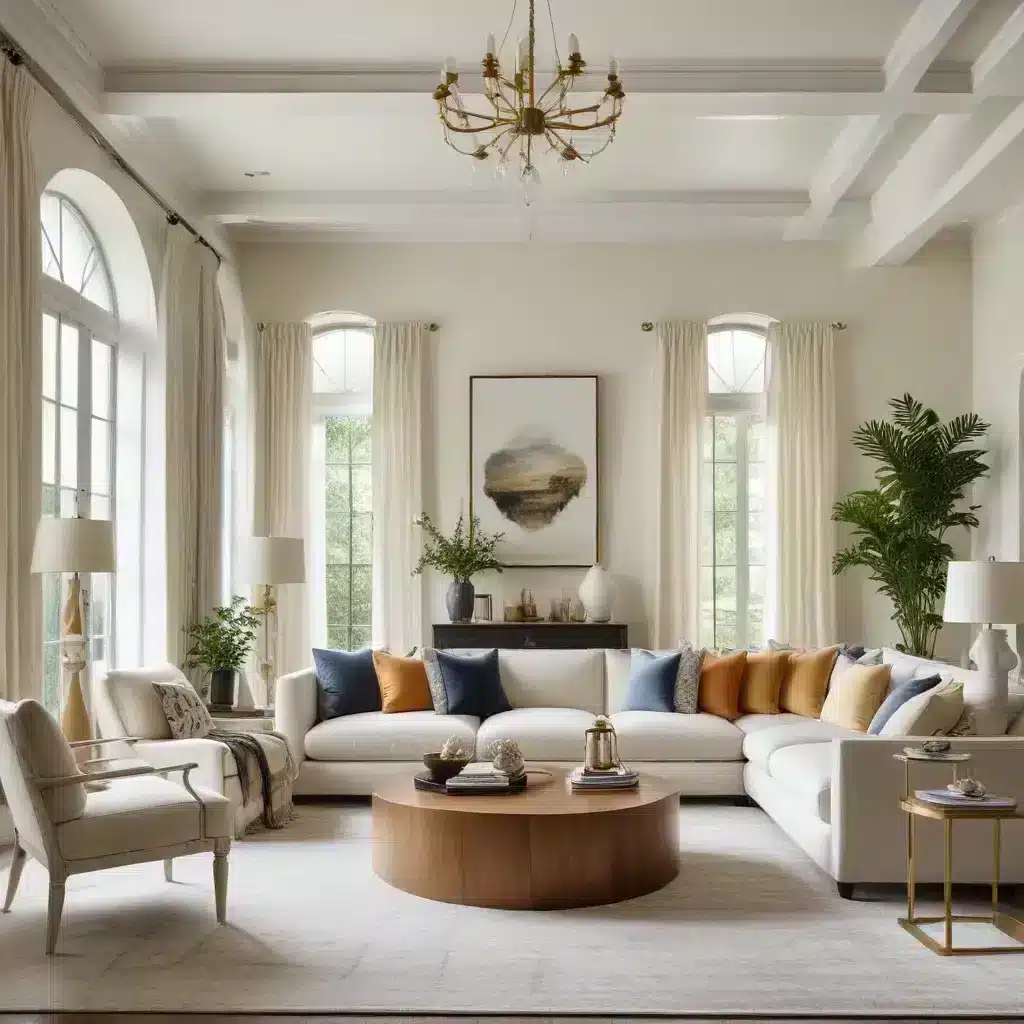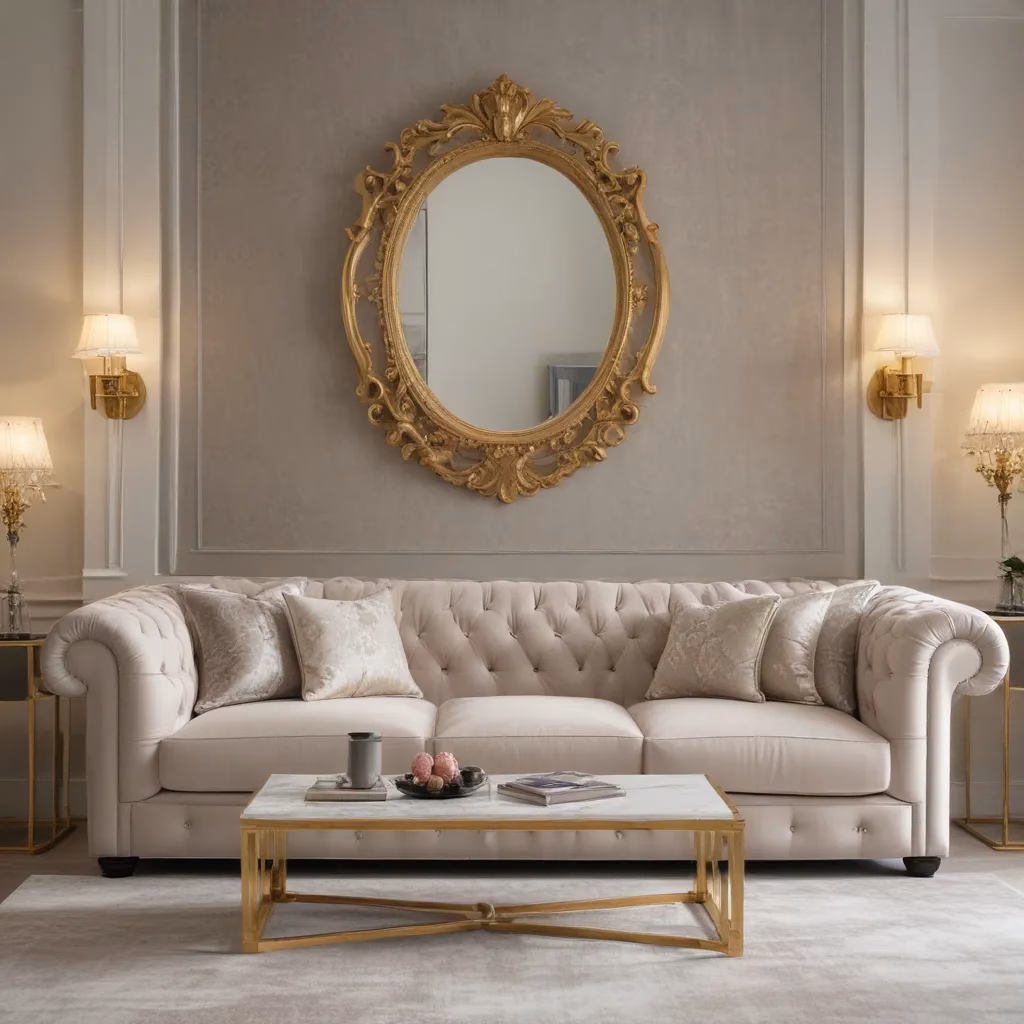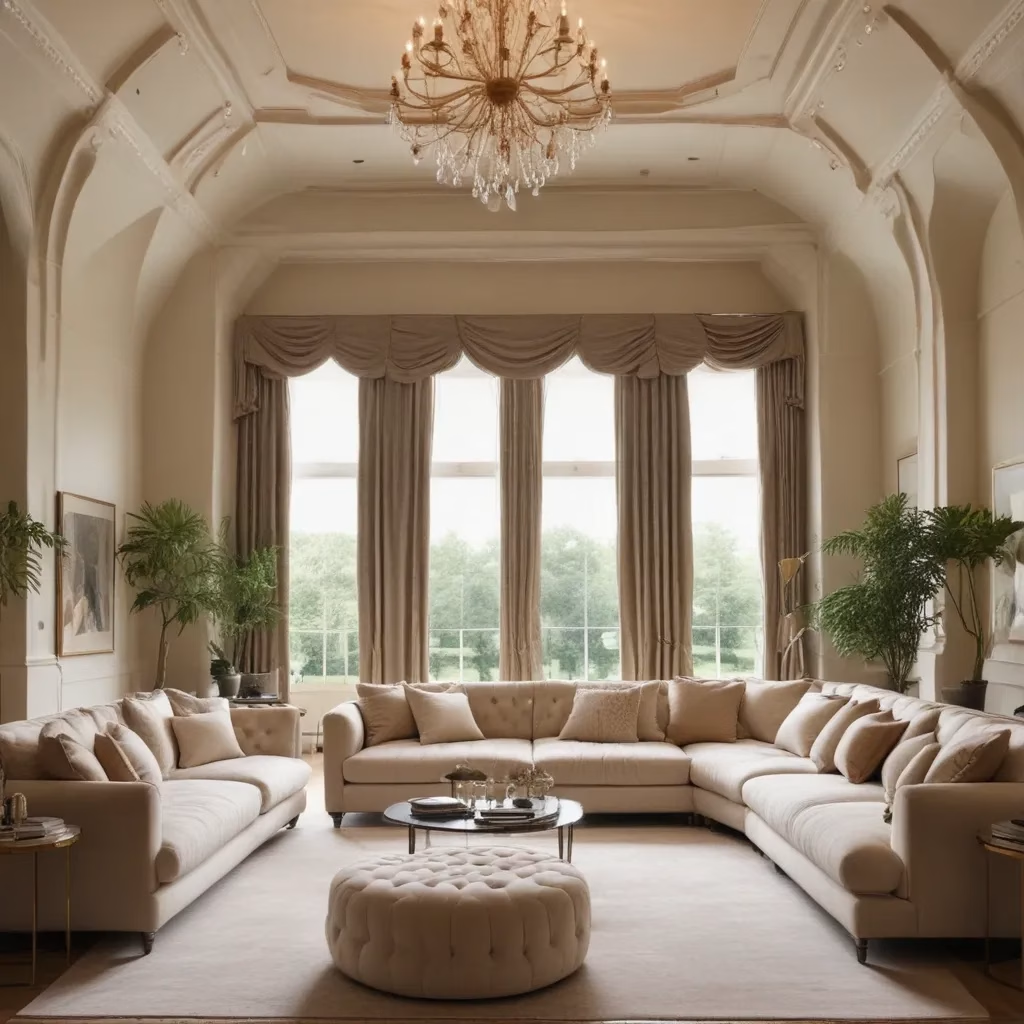
The Art of Selecting a Timeless Sofa
As a furniture specialist with years of experience, I’ve seen trends come and go. But one thing remains constant: the appeal of a timeless sofa. When you’re investing in a centerpiece for your living room, you want something that will stand the test of time, both in style and durability.
Selecting a sofa that transcends fleeting fads isn’t just about aesthetics; it’s about making a smart investment. A well-chosen sofa can serve as the anchor for your entire living space, setting the tone for your decor and providing comfort for years to come.
In my experience, the key to choosing a timeless sofa lies in focusing on classic silhouettes and high-quality materials. Look for clean lines, neutral colors, and sturdy construction. These elements ensure that your sofa will remain stylish and functional long after you’ve brought it home.
Understanding Sofa Styles: From Classic to Contemporary
When it comes to sofa styles, the options can seem endless. But understanding the basics can help you make an informed decision. Let’s break down some of the most enduring styles:
Chesterfield Sofas
The Chesterfield is a true classic, characterized by its rolled arms, deep button tufting, and equal arm and back height. This style exudes sophistication and works well in both traditional and modern settings.
Mid-Century Modern
Popularized in the 1950s and 60s, mid-century modern sofas feature clean lines, tapered legs, and minimalist design. They’re perfect for those who appreciate a retro-inspired look with contemporary appeal.
English Roll Arm
This style combines comfort with elegance, featuring low arms that curve outwards and a tight back. It’s a versatile choice that can complement various decor styles.
Lawson Style
Known for its simple, boxy shape and separate back cushions, the Lawson sofa prioritizes comfort without sacrificing style. It’s an excellent choice for those who value relaxation and versatility.
Each of these styles has stood the test of time, proving their ability to adapt to changing decor trends while maintaining their core appeal. When selecting your sofa, consider which style best aligns with your personal taste and the overall aesthetic of your home.
The Importance of Quality Construction
In my years of experience, I’ve learned that the true value of a sofa lies not just in its appearance, but in its construction. A well-made sofa can last for decades, while a poorly constructed one might need replacement in just a few years.
When examining a sofa’s construction, pay close attention to the frame. Hardwood frames, particularly those made from kiln-dried oak, maple, or beech, offer superior durability. Avoid sofas with frames made from particleboard or metal, as these are more prone to warping and breakage over time.
The suspension system is another crucial factor. Eight-way hand-tied springs are often considered the gold standard, providing excellent support and longevity. However, high-quality sinuous spring systems can also offer good support at a more affordable price point.
Cushion filling is where personal preference comes into play. High-resilience foam wrapped in down offers a good balance of support and softness, while all-down cushions provide luxurious comfort but require more maintenance. For those seeking a more eco-friendly option, cushions filled with recycled fibers or natural latex can be excellent choices.
Remember, a well-constructed sofa might come with a higher price tag, but it’s an investment that pays off in the long run. As the saying goes, “Buy once, cry once” – it’s better to invest in quality upfront than to face the frustration and expense of frequent replacements.
Upholstery Choices: Balancing Style and Practicality
Choosing the right upholstery for your sofa is a critical decision that impacts both its appearance and longevity. In my experience, the best upholstery choices strike a balance between style, durability, and ease of maintenance.
Leather
Leather is a classic choice that ages beautifully. It’s durable, easy to clean, and develops a rich patina over time. However, it can be expensive and may not be suitable for households with pets due to potential scratching.
Natural Fibers
Cotton and linen offer a relaxed, casual look and are comfortable in various climates. They’re breathable and often more affordable than leather. However, they can be prone to wrinkling and may stain more easily.
Synthetic Fabrics
Polyester and microfiber are known for their durability and stain resistance. They’re excellent choices for households with children or pets. While they may not have the same luxurious feel as natural fibers, modern synthetics can closely mimic the look and feel of more expensive materials.
Performance Fabrics
These innovative materials are designed to resist stains, fading, and wear. They’re perfect for high-traffic areas or homes with active families. While they may come at a premium, their longevity and ease of maintenance often justify the cost.
When selecting upholstery, consider not just the immediate appeal but how it will wear over time. A fabric that looks stunning in the showroom may not be practical for your lifestyle. Always request fabric samples and test them in your home environment before making a final decision.
Color Selection: Creating a Timeless Palette
The color of your sofa can dramatically impact the overall feel of your living space. While bold colors can be tempting, I often advise clients to consider neutral tones for their primary sofa, especially if they’re looking for a timeless appeal.
Neutral colors like beige, grey, taupe, or navy provide a versatile foundation that can adapt to changing decor trends. They allow you to update your room’s look with accessories and accent pieces without having to replace your main furniture.
That said, “neutral” doesn’t have to mean “boring.” Consider textured fabrics or subtle patterns to add visual interest without compromising versatility. A herringbone weave or a small-scale geometric pattern in a neutral tone can add depth and sophistication to your sofa.
If you’re drawn to bolder colors, consider using them in accent chairs or throw pillows. This approach allows you to incorporate trendy hues without committing to them long-term in your main seating piece.
Remember, the goal is to create a living space that you’ll love for years to come. A thoughtfully chosen color palette can help ensure your sofa remains a cherished part of your home, even as your tastes evolve.
Maintaining Your Sofa: Tips for Longevity
Investing in a quality sofa is just the first step; proper maintenance is key to ensuring its longevity. Over the years, I’ve developed a set of best practices for sofa care that can help keep your furniture looking its best:
-
Regular Cleaning: Vacuum your sofa weekly to remove dust and debris. Use the appropriate attachment to avoid damaging the fabric.
-
Prompt Stain Treatment: Address spills immediately. Blot (don’t rub) the stain with a clean, white cloth. For tougher stains, consult the manufacturer’s cleaning guidelines.
-
Rotation: Rotate cushions regularly to ensure even wear. This is particularly important for sofas with removable cushions.
-
Sunlight Protection: Direct sunlight can fade upholstery over time. Use window treatments to protect your sofa from harsh UV rays.
-
Professional Cleaning: Consider professional cleaning annually or bi-annually, depending on usage. This deep clean can help maintain the fabric and remove embedded dirt.
-
Avoid Rough Treatment: Discourage jumping or rough play on the sofa to prevent damage to the frame and springs.
-
Use Arm Covers: If your sofa sees heavy use, consider using arm covers to protect high-wear areas.
By following these maintenance tips, you can significantly extend the life of your sofa, ensuring it remains a beautiful and comfortable part of your home for years to come.
Arranging Your Living Room: Sofa as the Centerpiece
A well-chosen sofa deserves to be showcased effectively in your living room. As a furniture specialist, I’ve helped countless clients optimize their living spaces, and I’ve found that the sofa often serves as the natural focal point.
When arranging your living room, consider the following principles:
-
Traffic Flow: Ensure there’s a clear path for movement around the sofa. Ideally, you should be able to walk around the room without obstacles.
-
Conversation Areas: Position seating to facilitate easy conversation. A U-shaped or H-shaped arrangement often works well.
-
Balance: If you have a large sofa, balance it with other substantial pieces or a grouping of smaller items on the opposite side of the room.
-
Focal Point: Orient the sofa towards the room’s natural focal point, whether that’s a fireplace, a view, or a media center.
-
Rug Placement: If using an area rug, ensure it’s large enough to accommodate at least the front legs of all seating pieces. This helps unify the space.
-
Lighting: Consider both natural light and artificial lighting when placing your sofa. Ensure there’s adequate light for reading or other activities.
Remember, these are guidelines, not rigid rules. The best arrangement is one that suits your lifestyle and makes you feel comfortable in your space.
Complementing Your Sofa: Choosing Accent Pieces
Once you’ve selected your perfect sofa, the next step is to choose complementary pieces that enhance its beauty and functionality. This is where you can really let your personal style shine.
Coffee Tables
A coffee table should be proportional to your sofa, typically about two-thirds its length. Consider the height as well; it should be level with or slightly lower than your sofa’s seat cushions.
Side Tables
Side tables provide both functionality and style. They offer a convenient spot for lamps, drinks, or decorative items. Choose pieces that complement your sofa’s style without matching too perfectly.
Accent Chairs
Accent chairs offer an opportunity to introduce contrasting colors or patterns. They can tie together your color scheme or add a pop of unexpected color to the room.
Ottomans
An ottoman can serve multiple purposes: extra seating, a footrest, or even additional storage. Choose one that complements your sofa in style and scale.
Throw Pillows and Blankets
These accessories are an easy way to update your sofa’s look seasonally or as your tastes change. Mix textures and patterns for visual interest, but maintain a cohesive color scheme.
When selecting these pieces, consider not just their individual appeal, but how they work together to create a cohesive and inviting living space. The goal is to create a room that feels curated and personalized, not like a showroom display.
Sofa Trends: What’s Hot in the World of Seating
While timeless designs are always in style, it’s worth noting current trends in sofa design. As someone who attends furniture shows and stays abreast of industry developments, I’ve noticed several exciting trends:
Modular Designs
Modular sofas, which can be rearranged to suit different needs, are gaining popularity. They offer flexibility for changing lifestyles and room layouts.
Curved Shapes
Moving away from strict rectangular shapes, curved sofas are making a comeback. They add a softer, more organic feel to living spaces.
Sustainable Materials
There’s a growing demand for sofas made with eco-friendly materials, from recycled fabrics to sustainably sourced wood frames.
Smart Features
Some high-end sofas now incorporate technology, such as built-in USB ports or adjustable headrests controlled by smartphone apps.
Bold Textures
While neutral colors remain popular, there’s a trend towards interesting textures like bouclé or velvet to add visual and tactile interest.
While these trends are exciting, remember that the best sofa for you is one that fits your personal style and needs, regardless of current fashions.
Making Your Decision: A Sofa Buying Checklist
Choosing the perfect sofa can feel overwhelming, but having a clear checklist can simplify the process. Based on my experience helping countless clients find their ideal sofa, here’s a comprehensive checklist to guide your decision:
-
Measure Your Space: Know the dimensions of your room and any doorways the sofa will need to pass through.
-
Consider Your Lifestyle: Think about who will use the sofa and how. Do you need kid-friendly fabrics? Pet-resistant materials?
-
Determine Your Style: Decide whether you want a classic look or something more contemporary.
-
Set Your Budget: Remember to factor in potential delivery and assembly costs.
-
Test for Comfort: Sit on the sofa for at least 10 minutes to ensure it’s comfortable for extended periods.
-
Check the Frame: Ask about the frame material and construction method.
-
Examine the Cushions: Feel the firmness and ask about the filling materials.
-
Assess the Upholstery: Consider durability, ease of cleaning, and how well it fits your decor.
-
Look at the Details: Check the quality of stitching, zippers, and any decorative elements.
-
Understand the Warranty: Know what’s covered and for how long.
-
Ask About Care Instructions: Ensure you’re prepared to properly maintain your new sofa.
-
Consider Delivery Options: Determine if professional delivery and assembly are available and whether they fit your needs.
By systematically working through this checklist, you can approach your sofa purchase with confidence, knowing you’ve considered all the important factors.
The Value of Professional Advice
While this guide provides a comprehensive overview of sofa selection, there’s no substitute for personalized, professional advice. As a furniture specialist, I’ve seen how valuable expert guidance can be in making the right choice.
A professional can help you navigate the myriad options available, taking into account your specific needs, preferences, and budget. They can offer insights into construction quality that might not be immediately apparent, and can help you avoid common pitfalls in furniture selection.
Moreover, a furniture specialist can often provide access to a wider range of options than you might find in a typical retail setting. They can help you explore custom options, allowing you to create a sofa that’s truly perfect for your space.
If you’re feeling overwhelmed by the sofa selection process, consider seeking out professional assistance. Many furniture retailers offer design services, or you might choose to work with an independent interior designer. The investment in professional advice can save you time, stress, and potentially costly mistakes in the long run.
Conclusion: Your Perfect Sofa Awaits
Selecting the right sofa is a significant decision, but it’s also an exciting opportunity to enhance your living space. By considering factors like style, construction, upholstery, and maintenance, you can choose a sofa that will bring you comfort and joy for years to come.
Remember, the perfect sofa is one that not only looks beautiful in your home but also supports your lifestyle and reflects your personal taste. Whether you prefer the classic elegance of a Chesterfield or the sleek lines of a mid-century modern design, there’s a sofa out there that’s perfect for you.
As you embark on your sofa-buying journey, keep in mind the wealth of options available from quality providers like Sofa Spectacular. Their range of timeless designs and commitment to quality craftsmanship make them an excellent resource for discerning furniture shoppers.
Ultimately, choosing a sofa is about creating a comfortable, inviting space where you can relax, entertain, and make memories. With the right approach and a bit of patience, you’ll find a sofa that not only meets your needs but exceeds your expectations, becoming a beloved part of your home for years to come.



